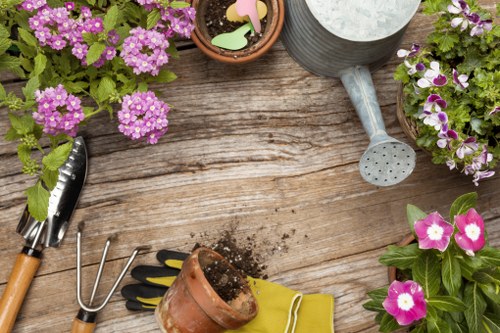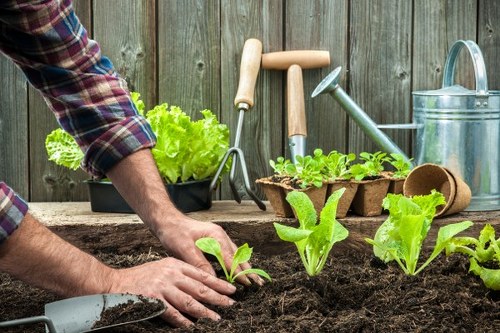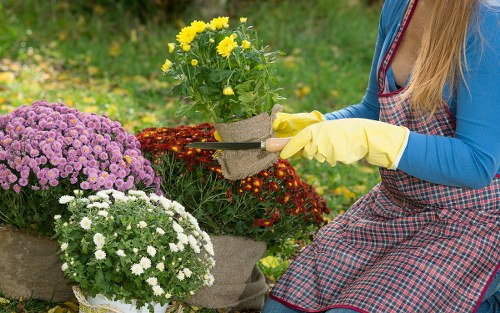Transform Your Outdoor Space with Landscape Gardening in Violet Gardens

Welcome to the vibrant world of Landscape Gardening in Violet Gardens. Whether you're a seasoned gardener or just starting, incorporating violets into your landscape design can add a stunning splash of color and charm to your outdoor space. In this article, we'll explore various aspects of violet garden landscaping, offering tips and ideas to help you create a beautiful and harmonious garden.
Violet gardens are not only visually appealing but also beneficial for the environment. Violets attract pollinators like bees and butterflies, contributing to a healthy ecosystem. Additionally, many violet varieties are low-maintenance, making them an excellent choice for gardeners looking to add beauty without too much effort.
From selecting the right soil to choosing complementary plants, every element plays a crucial role in the success of your violet garden. Let's delve into the essential components of landscape gardening in violet gardens and how you can achieve a thriving and picturesque garden.

Choosing the Right Violets for Your Garden
When planning a violet garden, selecting the appropriate varieties is paramount. There are numerous violet species to choose from, each with its unique characteristics and growing requirements. Some popular options include:
- Sweet Violets (Viola odorata): Known for their fragrant flowers, sweet violets are perfect for shaded areas.
- Pansies (Viola tricolor): These hardy plants come in a variety of colors and can withstand cooler temperatures.
- Johnny-Jump-Ups (Viola chickasawensis): Small and cheerful, these violets are ideal for ground cover and border plantings.
- Wild Violets (Viola labradorica): These native plants are excellent for naturalizing and supporting local wildlife.
Consider the specific conditions of your garden, such as sunlight, soil type, and moisture levels, when selecting violet varieties. Matching the plants to their preferred environment will ensure robust growth and vibrant blooms throughout the season.
Additionally, mixing different violet species can create a layered and textured look, adding depth and interest to your garden design.

Soil Preparation for Optimal Growth
Understanding Soil Requirements
Proper soil preparation is essential for the success of your violet landscape garden. Violets generally prefer well-draining soil with a slightly acidic to neutral pH. Conduct a soil test to determine the current pH and nutrient levels, allowing you to make necessary adjustments.
Amending the Soil
To create an ideal growing environment, amend the soil with organic matter such as compost or well-rotted manure. This enhances soil structure, improves drainage, and provides essential nutrients for healthy plant growth.
Adding Mulch
Applying a layer of mulch around your violets helps retain moisture, suppress weeds, and regulate soil temperature. Organic mulches like bark or straw are excellent choices, as they gradually decompose, enriching the soil over time.

Designing Your Violet Garden Layout
Thoughtful design is key to creating an appealing violet landscape garden. Start by sketching a layout that considers the natural growth habits of your violet varieties and the overall aesthetic you wish to achieve.
Incorporate different levels and textures by combining ground covers with taller border plants. For example, place low-growing violets at the front and taller plants like hostas or ferns towards the back to create a layered effect.
Using pathways and focal points such as garden statues or benches can add interest and make your garden a welcoming space for relaxation and enjoyment.

Planting and Maintenance Tips
Proper planting techniques and regular maintenance are crucial for a thriving violet garden. Here are some essential tips:
- Planting Time: The best time to plant violets is in the spring or fall when the weather is mild.
- Spacing: Ensure adequate spacing between plants to promote air circulation and reduce the risk of disease.
- Watering: Keep the soil consistently moist but not waterlogged. Drip irrigation systems can provide efficient and targeted watering.
- Fertilization: Use a balanced fertilizer to support healthy growth and vibrant blooms. Avoid over-fertilizing, as this can lead to excessive foliage at the expense of flowers.
- Pest and Disease Control: Regularly inspect your plants for signs of pests or disease. Use organic or chemical treatments as necessary to protect your garden.
By following these maintenance practices, your violet landscape garden will flourish, providing beauty and enjoyment throughout the year.
Contact us today to learn more about creating your perfect violet garden or to schedule a consultation with our expert landscape designers.

Enhancing Your Garden with Complementary Plants
While violets are the stars of your garden, adding complementary plants can enhance the overall aesthetic and ecological value. Consider incorporating plants that bloom at different times to ensure year-round interest.
- Perennials: Plants like coneflowers and daylilies provide structure and attract pollinators.
- Annuals: Adding annuals such as marigolds or petunias can introduce vibrant colors and fill in gaps.
- Ornamental Grasses: These add movement and texture, creating a dynamic backdrop for your violets.
- Shrubs and Trees: Incorporate evergreen shrubs or small ornamental trees to provide height and define the garden space.
Choosing a diverse range of plants not only enhances the visual appeal of your violet garden but also supports a variety of wildlife, creating a balanced and thriving ecosystem.
Remember to consider the growth habits and care requirements of each plant to ensure they complement rather than compete with your violets.

Seasonal Care for Your Violet Garden
Maintaining your violet landscape garden throughout the year ensures its longevity and continuous beauty. Seasonal care involves specific tasks tailored to the changing weather conditions and plant needs.
Spring
As the weather warms, it's time to clean up any winter debris and prepare your garden for the growing season. Prune dead foliage, replenish mulch, and fertilize to encourage new growth.
Summer
During the hot months, focus on regular watering and weeding. Deadhead spent blooms to promote further flowering and maintain the garden's tidy appearance.
Autumn
In the fall, plant new violets to replace any that have died out and to fill in gaps. Cut back perennials and add a layer of mulch to protect roots from frost.
Winter
Protect your garden from harsh winter conditions by covering delicate plants and removing any remaining debris. This helps prevent disease and prepares the garden for the next growing season.
Consistent seasonal care ensures that your violet landscape garden remains healthy and vibrant year after year.
Book your service now and let our team assist you in maintaining a beautiful and resilient violet garden.

Sustainable Practices in Violet Gardening
Embracing sustainable gardening practices not only benefits the environment but also enhances the health and resilience of your violet landscape garden. Here are some eco-friendly strategies to consider:
- Water Conservation: Implement rainwater harvesting systems and use drip irrigation to minimize water usage.
- Organic Gardening: Utilize organic fertilizers and natural pest control methods to reduce chemical dependency.
- Native Plants: Incorporate native violet species and companion plants that are well-adapted to your local climate and soil conditions.
- Composting: Create a compost bin to recycle garden and kitchen waste, providing nutrient-rich soil amendments.
- Biodiversity: Encourage a variety of plants and beneficial insects to create a balanced and thriving ecosystem.
By adopting these sustainable practices, your violet landscape garden will not only be beautiful but also contribute positively to the surrounding environment.
Get started with sustainable gardening today by reaching out to our experts who can help you implement eco-friendly solutions in your violet garden.

Incorporating Hardscape Elements
While plants are the foundation of any garden, incorporating hardscape elements can enhance the functionality and aesthetic appeal of your violet landscape garden. Consider the following additions:
- Pathways: Create pathways using materials like gravel, stone, or concrete to guide visitors through the garden.
- Water Features: Add a fountain or small pond to introduce the soothing sound of water and attract wildlife.
- Seating Areas: Install benches or garden chairs to provide a space for relaxation and enjoyment of your garden.
- Garden Art: Incorporate sculptures, birdbaths, or other decorative elements to add personality and interest.
- Fencing and Boundaries: Define garden spaces with decorative fences or trellises, enhancing structure and privacy.
These hardscape features complement your violet plants, creating a balanced and inviting landscape. When thoughtfully integrated, they enhance the overall design and functionality of your garden.
Explore our range of hardscape solutions and let us help you design the perfect layout for your violet garden.

Lighting for Evening Ambiance
Enhancing your violet landscape garden with lighting can extend its beauty into the evening hours, creating a magical ambiance. Consider the following lighting options:
- String Lights: Drape string lights along pathways or pergolas for a warm and inviting glow.
- Spotlights: Use spotlights to highlight key features like specimen plants or water elements.
- Lanterns: Place lanterns on tables or hanging from trees to add decorative lighting.
- Solar Lights: Eco-friendly solar lights can illuminate pathways and garden edges without additional energy costs.
- LED Lights: Energy-efficient LED lights offer a variety of colors and intensities to suit your design needs.
Proper lighting not only enhances the visual appeal of your violet landscape garden but also improves safety and usability during nighttime. Balance functionality with aesthetics to create a harmonious and enchanting outdoor space.
Contact us today to learn how we can help you incorporate beautiful lighting solutions into your violet garden.

Conclusion: Embrace the Beauty of Violet Landscapes
Creating a violet landscape garden is a rewarding endeavor that brings color, life, and tranquility to your outdoor space. By carefully selecting violet varieties, preparing the soil, designing with complementary plants, and incorporating sustainable practices, you can cultivate a garden that is both beautiful and environmentally friendly.
Remember to consider the various elements discussed, including seasonal care, hardscape features, and lighting, to enhance the overall appeal and functionality of your garden. With the right planning and maintenance, your violet garden will be a source of pride and enjoyment for years to come.
Ready to transform your outdoor space? Book your service now and let our team of experts guide you in creating the perfect violet landscape garden.



